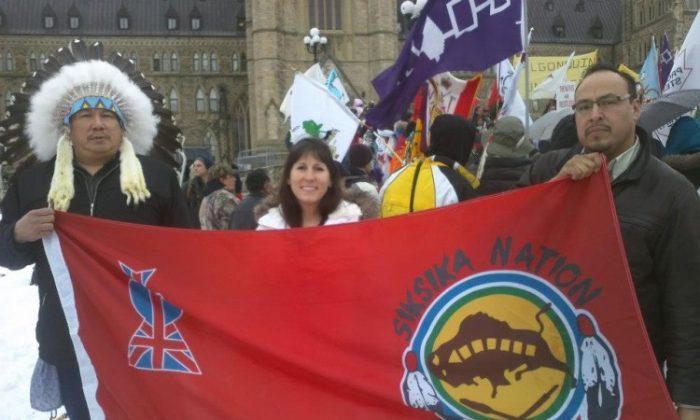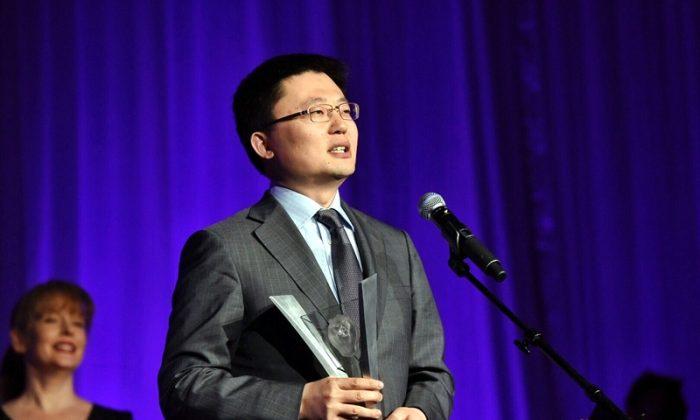Negative perceptions about aboriginals have increased among Canadians since last year, sparking a need for national dialogue on the issue, the Canadian Race Relations Foundation says.
A recent telephone survey sponsored by the CRRF, a federal agency, found that just 59 percent of English Canadians have a positive perception of aboriginals, down from 68 percent last year.
Although immigrants tend to have more positive attitudes than the general population, 25 percent of both the immigrant and non-immigrant respondents reported having low trust of aboriginals.
“The survey results tell us we all need to make greater efforts to identify how negative perceptions develop and what can be done to address them,” says Rubin Friedman, the CRRF’s principal operating officer.
“Over the years, we have had anecdotal reports of how quickly some immigrants picked up negative stereotypes of Aboriginal Peoples in cities where they live in close proximity to each other,” he says.
“Immigrants in particular often have no knowledge of Aboriginal Peoples and their history in Canada. Why do negative perceptions develop so fast?”
Aboriginals are the fastest-growing population in Canada, and with recent high-profile issues in the spotlight such as the Idle No More protest movement, the relationship between aboriginals and other Canadians has become one of the most important race relations issues in the country, says Friedman.
“In Canada we have developed this concept that the Charter of Rights and Freedoms applies in the same way to everybody, but if we understand our history better we would know that there are elements of our foundation which give Aboriginal Peoples a particular status that doesn’t apply to the rest of us, so that they have particular rights that other people don’t have,” he explains.
“If you’re completely focused on the notion of equality in every way, this can be something that’s hard to get your head around. And I could see that as more and more Aboriginal Peoples move into cities and towns there is potential for great misunderstanding—they’re sharing the same space with people of many backgrounds.”
‘A more positive kind of contact’
The good news, says Friedman, is that in general the survey found the more Canadians reported having contact with aboriginals, the more positive their views were. The only anomalies were Manitoba and Saskatchewan, where Canadians reported both the most negative attitudes and the greatest frequency of contact.
“Unlike other parts of the country, increased contact here did not have an effect on more positive views. This might suggest that the kind of contact with aboriginals is important for more positive attitudes, not just frequency,” says Friedman.
“We need a more positive kind of contact that a dialogue can bring.”
On Wednesday the CRRF held an event in Winnipeg to discuss perceptions of aboriginals in immigrant communities, and further explore the nature of the issues to see what should be done both locally and elsewhere in the country.
The talks, launched the day before the International Day for the Elimination of Racism on March 21, will continue as part of the CRRF’s Interfaith and Belonging Project—a national initiative funded by Citizenship and Immigration Canada to promote dialogue between different ethnocultural and faith-based communities.
The talks aim to strengthen these communities’ participatory role in Canadian society.
The question of how aboriginals are perceived among newcomers from a range of faiths will be explored in the dialogue, by bringing together local and national leaders.
Friedman says the talks will do much to uncover solutions to address the negative perceptions of aboriginals in Canada. There are numerous solutions that could be introduced such as changes to the curriculum on these subjects in the education system, or providing more cultural and historical information about Aboriginal Peoples to new immigrants, he adds.
“Given the complexity of the issue itself, how deeply ingrained some of the attitudes might already be, the solutions [will] probably have to be multifaceted,” he says.
“[There is a] need for greater community dialogue, dialling down the rhetoric—if possible trying to find venues and opportunities for bringing people together in a less confrontational way.”





Friends Read Free